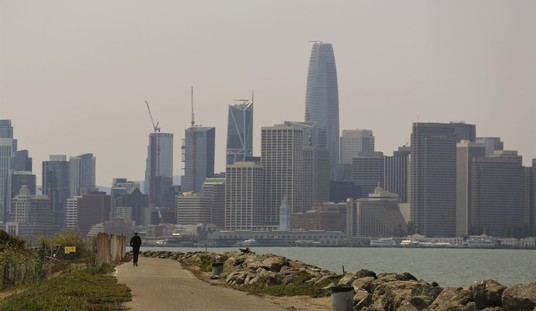Commerce released its final revision of the annualized rate of growth from the second quarter. Initially estimated at 2.4% in July, the number got sharply revised to 1.6% in August. Now, with the final numbers in place, economic growth still looks moribund:
Real gross domestic product — the output of goods and services produced by labor and property located in the United States — increased at an annual rate of 1.7 percent in the second quarter of 2010, (that is, from the first quarter to the second quarter), according to the “third” estimate released by the Bureau of Economic Analysis. In the first quarter, real GDP increased 3.7 percent. …
The increase in real GDP in the second quarter primarily reflected positive contributions from personal consumption expenditures, nonresidential fixed investment, exports, private inventory investment, federal government spending, and residential fixed investment. Imports, which are a subtraction in the calculation of GDP, increased.
The deceleration in real GDP in the second quarter primarily reflected a sharp acceleration in imports and a sharp deceleration in private inventory investment that were partly offset by an upturn in residential fixed investment, accelerations in nonresidential fixed investment and in federal government spending, and an upturn in state and local government spending.
The third quarter numbers for “Recovery Summer” will be out at the end of next month. That won’t look much better, thanks to a summer of almost across-the-board declines and a crash in home sales and construction. We will be lucky to get to 1.7%, unless September delivers some eye-popping upticks in sales and lowering of inventories, which have grown all summer long thanks to low demand.
The initial jobless claims report doesn’t give any hint of rebound:
In the week ending Sept. 25, the advance figure for seasonally adjusted initial claims was 453,000, a decrease of 16,000 from the previous week’s revised figure of 469,000. The 4-week moving average was 458,000, a decrease of 6,250 from the previous week’s revised average of 464,250.
The advance seasonally adjusted insured unemployment rate was 3.5 percent for the week ending Sept. 18, a decrease of 0.1 percentage point from the prior week’s revised rate of 3.6 percent.
The advance number for seasonally adjusted insured unemployment during the week ending Sept. 18 was 4,457,000, a decrease of 83,000 from the preceding week’s revised level of 4,540,000. The 4-week moving average was 4,526,750, a decrease of 5,500 from the preceding week’s revised average of 4,532,250.
That is right in the range of figures seen for all of 2010. Job “churn” continues well into Q3, and while job creation is a lagging indicator, the consistent number of people filing for unemployment each week shows that we haven’t yet stopped the job destruction.
Tomorrow, the Department of Labor will announce September’s jobless rate in what will be the final statement of unemployment before the midterm elections. From this data, it doesn’t appear that the news will be good for Democrats, or for anyone looking for a job.
Update: The AP was, er, expecting this (via DogSoldier):
The new reading is a notch higher than the 1.6 percent growth rate the government estimated a month ago. But it marks a sharp slowdown from a 3.7 percent growth rate logged in the first quarter. And, the new figure doesn’t change the big picture: The economy has been losing momentum since the end of last year.
Many think the economy grew at around the same anemic pace, or slightly worse, during the July-to-September quarter. Little improvement is expected in the final quarter of this year. That’s why unemployment — now at 9.6 percent — is expected to stay high or even rise in the coming months.
To be fair, it’s usually Reuters that uses “unexpected” in its reports. Maybe they should read the AP more often.








Join the conversation as a VIP Member